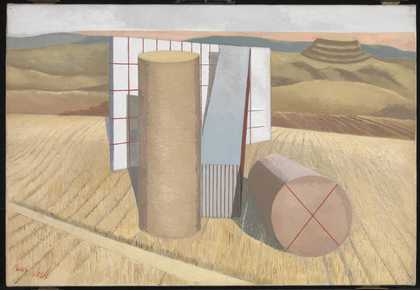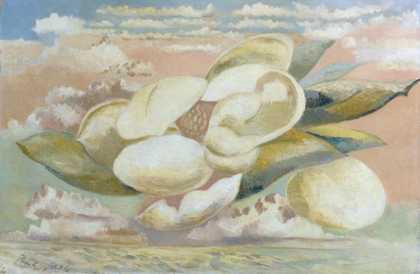The painting depicts a group of large objects, sharply focused – two columns, a severely raked square box and a gridded screen: a vocabulary of forms found in sculptures of a more recent time. The setting of a Wiltshire field with a ridged man-made hill in the background refers to the Avebury stone circle, which is so extensive that it now surrounds a village. The mount is Silbury Hill, a prehistoric site that caused a straight-as-an-arrow Roman road to be diverted. My family and I lived in Wiltshire in the 1960s and 1970s, and Avebury and Silbury were visited often. A walk around the circle was a great pleasure. The stones in it had a presence, and some resembled Nash’s Equivalents for the Megaliths. At the time the third dimension was an important aspect of my paintings, and in their way of entering the viewer’s space, they could also be equivalents for megaliths.
Paul Nash's Equivalents for the Megaliths 1935 Tate Britain Rehang
Tate Etc. invited a selection of contemporary artists featured in the new rehang of British art at Tate Britain to choose a favoured work from a fellow artist – past or present – also on display. Here, Richard Smith discusses Paul Nash's Equivalents for the Megaliths 1935



